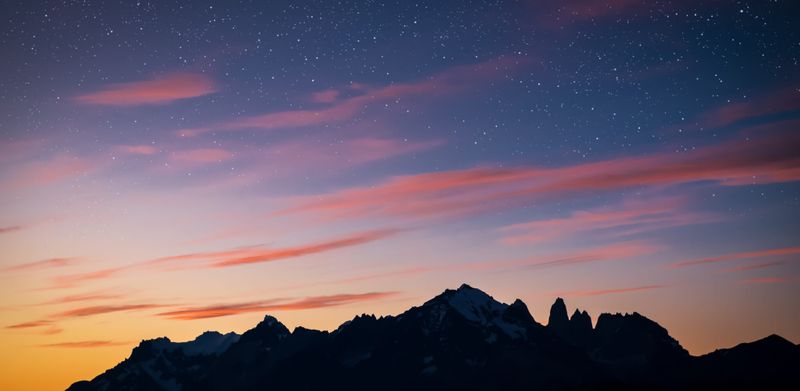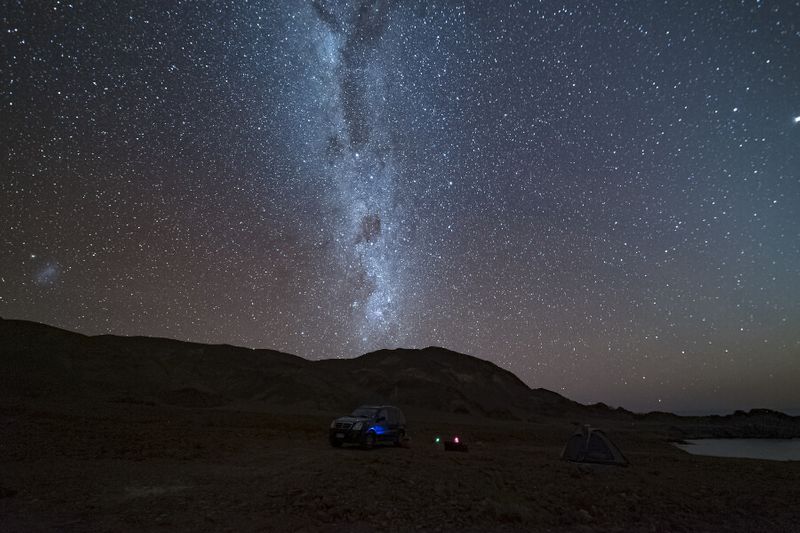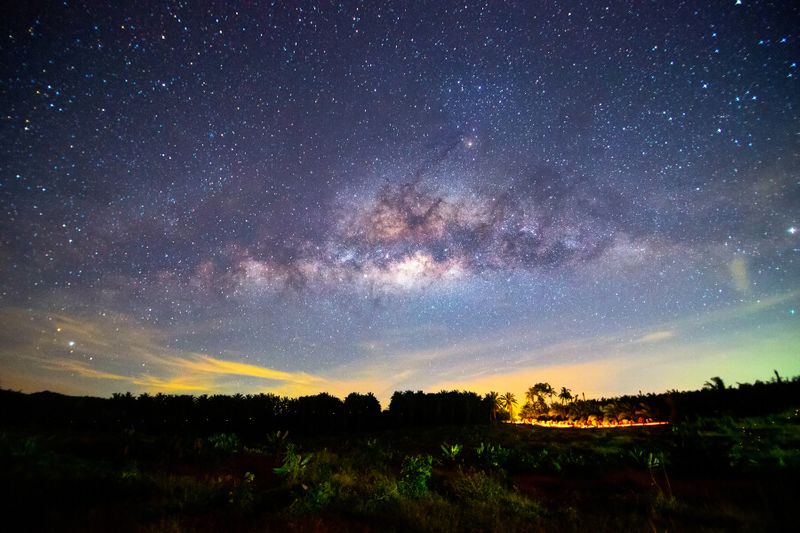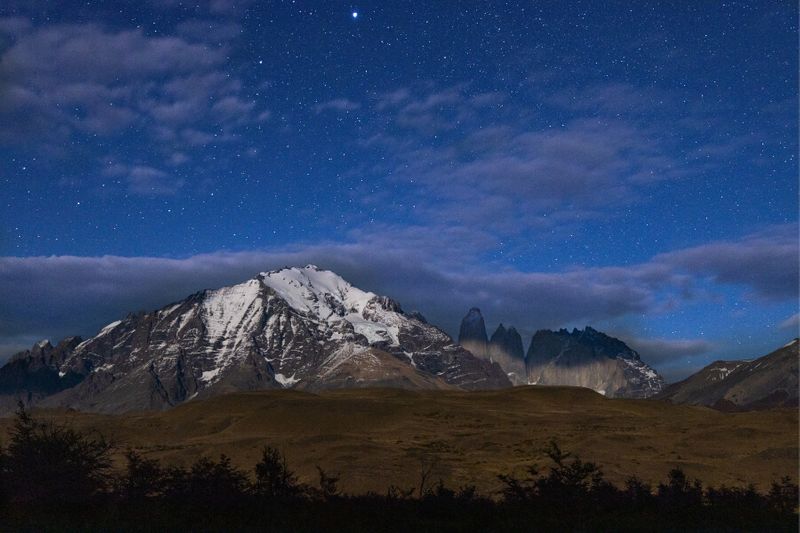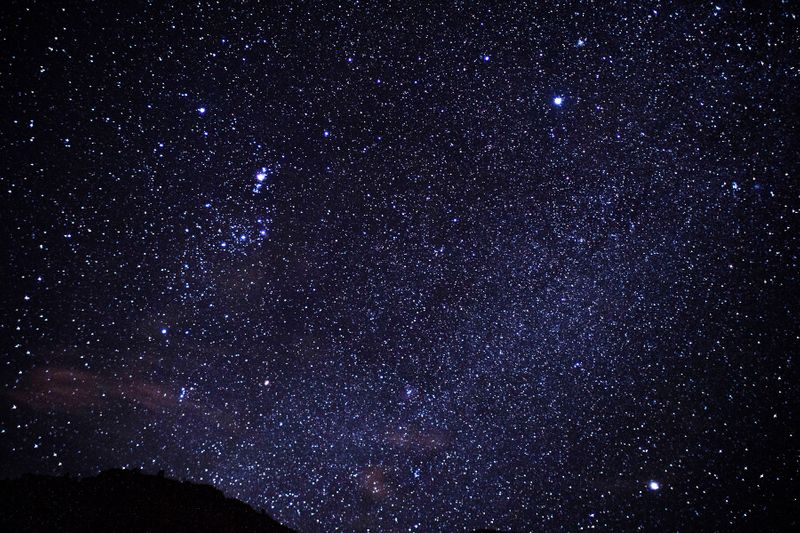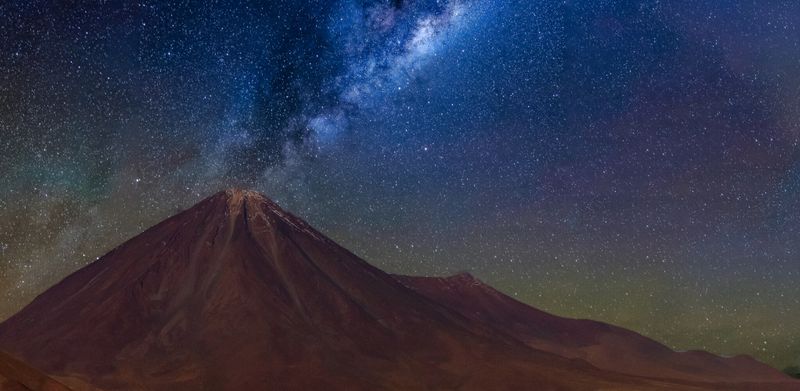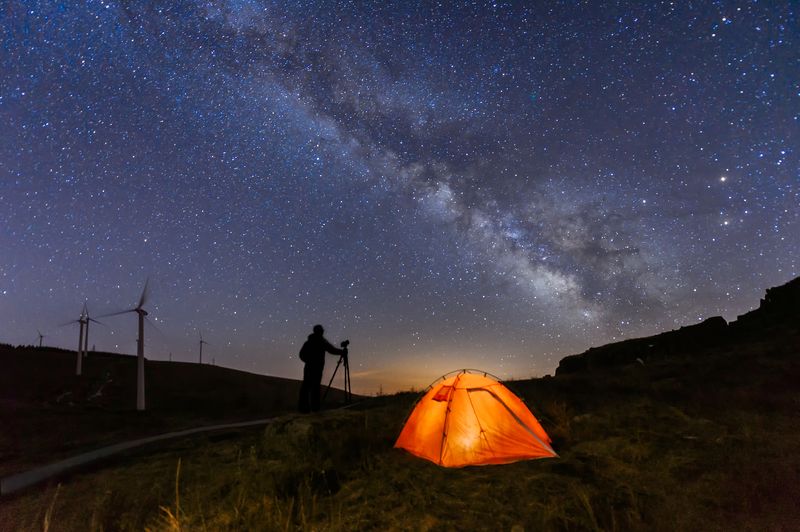Chile offers some of the best stargazing on Earth, attracting scientists, photographers, and curious travellers alike. With its high-altitude deserts, clear skies, and low light pollution, this South American destination creates unmatched conditions for observing the night sky.
Whether you’re an avid astronomer or simply want to marvel at the Milky Way, Chile’s diverse landscapes, from the bone-dry Atacama Desert to glacier-lit Patagonia, promise awe-inspiring views. The nation is home to a significant share of the world’s most advanced ground-based telescopes, with more than 50 international research centres taking advantage of its rare combination of low rainfall, high elevation, and stable skies. Many of these observatories welcome visitors, giving you the chance to see deep space exploration in action.
Fast facts for stargazers
- Best season: April–October offers the clearest skies across much of Chile (When to visit Chile)
- Top spots: Atacama Desert, Elqui Valley, Torres del Paine, Cajón del Maipo
- Unique sights: Southern Cross, Alpha Centauri, Omega Centauri, Jewel Box Cluster
- Essential tip: Plan around the new moon (moon phases) for the darkest skies
- Photography gear: Tripod, wide-angle lens (f/2.8 or wider), manual settings for long exposure
Chile’s stargazing capital: The Atacama Desert sky
The Atacama Desert in northern Chile enjoys almost 360 cloudless nights a year, making it one of the clearest and driest places on Earth. By day, the cracked salt flats and ochre rock formations resemble another planet; by night, the air cools, the wind softens, and the stars spill across the sky in dazzling clarity.
San Pedro de Atacama is the main hub for astronomy tourism here, offering guided stargazing tours, night sky photography workshops, and visits to major observatories. A standout is ALMA—the Atacama Large Millimeter Array—a world-leading research facility set at 5,000 metres (more than 16,000 feet). Learn about its privileged location. Also notable is the University of Tokyo Atacama Observatory (TAO), the highest optical-infrared observatory on Earth at 5,640 metres (more than 18,000 feet).
Must-do in the Atacama
- Join a stargazing tour in the Atacama Desert to view constellations and planets through powerful telescopes.
- Try your hand at night sky photography in the Atacama Desert, a bucket-list experience for astrophotographers.
Elqui Valley: Wine, beaches, and cosmic views
At the southern edge of the Atacama lies the Elqui Valley, a lush corridor running from the Andes to the Pacific Ocean. Known for its vineyards, pisco distilleries, and exceptionally clear skies.
Here, astronomy blends effortlessly with leisure: sip a glass of Syrah while the constellations rise above the ocean, or join a tour at one of the valley’s dedicated observatories. Even hotels in La Serena, Chile’s second-oldest city and the gateway coastal city to the valley, often provide in-house telescopes for guests. The region also draws crowds during celestial events, including the total solar eclipse of 2019.
Don’t miss the Elqui Valley
- Explore the range of Elqui Valley astronomy experiences at one of the region’s observatories
- Combine stargazing with wine tasting for a uniquely Chilean evening
Torres del Paine: Glaciers under the stars
In southern Patagonia, Torres del Paine National Park offers a stargazing setting unlike any other—think jagged peaks, vast icefields, and star-filled skies reflected in glacial lakes. On still nights, the silence is broken only by the distant creak of shifting ice.
While rare, this is also one of the places where strong geomagnetic activity can reveal the Southern Lights (Aurora Australis). This elusive glow has also been spotted in Australia, New Zealand, Antarctica, and parts of Falkland Islands and South Georgia Island.
Cajón del Maipo: Stargazing close to Santiago
Less than two hours from the capital, Cajón del Maipo offers an easy escape into the foothills of the Andes. Crisp mountain air, flowing rivers, and minimal light pollution make it a favourite for short stargazing trips.
Highlights include the Roan Jase Observatory and Achaya Observatory, both offering guided telescope sessions and astronomy talks. Pair your night tour with a day of hiking or thermal springs for a full nature-immersion experience.
Santiago: The city’s window to the stars
Short on time? You can still enjoy Chile’s night sky from the capital. The Cerro Pochoco Observatory, located just outside the city, offers evening workshops and telescope sessions. It’s a convenient option for travellers who want a taste of Chile’s best stargazing magic without leaving Santiago.
What to look for in Chile’s night sky
With its high-altitude deserts and remote valleys, Chile offers the best stargazing conditions in the Southern Hemisphere. During your stargazing and astronomy holiday in Chile, these are some of the most spectacular sights to look out for:
1. The Southern Cross
Like the North Star in the Northern Hemisphere, the Southern Cross has long guided travellers and explorers through the skies. This iconic constellation is circumpolar, meaning it’s visible year-round from Chile and never dips below the horizon.
Early navigators used it to locate true south by tracing a line from the cross and its ‘pointer stars.’ Today, it remains one of the most recognisable constellations in the Chilean night sky.
2. Alpha Centauri
Located just 4.3 light-years from Earth, Alpha Centauri is the closest star system to our solar system. Made up of three stars (Alpha Centauri A, B, and C), it appears as a single glowing point to the naked eye. Despite its distance, it’s the third-brightest star visible from Earth and a standout for both amateur astronomers and experienced stargazers.
3. Jewel Box Cluster
Described by 19th-century astronomer John Herschel as a “superb piece of fancy jewellery,” the Jewel Box Cluster is one of the youngest known star clusters—just 14 million years old. While it appears as a single hazy star to the unaided eye, a telescope reveals a vivid collection of brightly coloured stars. It’s a stunning highlight during guided night sky tours in Chile.
4. Omega Centauri
Omega Centauri is a densely packed, ancient globular cluster estimated to be around 13 billion years old, housing more than 10 million stars. On a clear, dark night, it’s visible with the naked eye and shines as brightly as the moon through a telescope.
Scientists believe it may be the collapsed core of a former dwarf galaxy, and possibly even contain a black hole at its centre. It’s a favourite target for astrophotographers and those interested in deep-space objects during stargazing tours in Chile.
Best time to go stargazing in Chile
Figuring out the best time to go stargazing in Chile can make all the difference when planning your trip. Generally, the dry season—from April to October—offers the clearest and most stable conditions, ideal for uninterrupted views of the night sky.
During these months, regions like the Atacama Desert, Elqui Valley, and parts of Patagonia experience little rainfall and low humidity, resulting in extended periods of clear, cloudless skies. These conditions are perfect for both casual skywatchers and more dedicated astrophiles.
Check out the moon phases to plan for new moon periods, when the Milky Way and faint constellations stand out best. Some observatories, like the ESO’s Very Large Telescope, tailor public sessions to these darker nights.
In short, Chile’s late autumn through early spring offers the best stargazing conditions—clear, dry nights paired with unforgettable views of the cosmos. Explore our full seasonal guide of the best time to visit Chile for more information on weather conditions.
Night sky photography tips
Chile’s Atacama Desert and Elqui Valley are world-class for astrophotography. A wide-angle lens with a large aperture (f/2.8 or wider) lets in more light and helps frame the vastness of the Chile night sky. Most photographers shoot in manual mode, adjusting ISO, exposure, and focus to achieve crisp, detailed results.
For those looking to improve their skills, stargazing tours and workshops focused on night sky photography in the Atacama Desert offer expert guidance. These sessions can teach you how to frame your shots, set camera parameters, and enhance images.
Remember, patience and practice are key—some of the most striking shots come when the Milky Way or constellations align just right. With the right setup and a bit of know-how, you’ll come away with images from your Chile tour that are breathtaking.
In summary: Why Chile tops the world for stargazing
- Clear, dry skies and minimal light pollution across diverse landscapes
- Access to world-leading observatories like ALMA and the Very Large Telescope
- Unique destinations from the Atacama Desert to Patagonia
- Prime conditions for both casual stargazers and astrophotographers
Ready to experience Chile’s spectacular skies? Join our Complete Patagonia With Ushuaia Premium Small Group Tour (which includes a visit to Torres del Paine National Park) or our bumper Inspiring South America, Chile & Galapagos Small Group Tour, which also includes unforgettable Amazon Jungle and Galapagos Islands stays. Visit Inspiring Vacations for more spectacular tours to South America.
